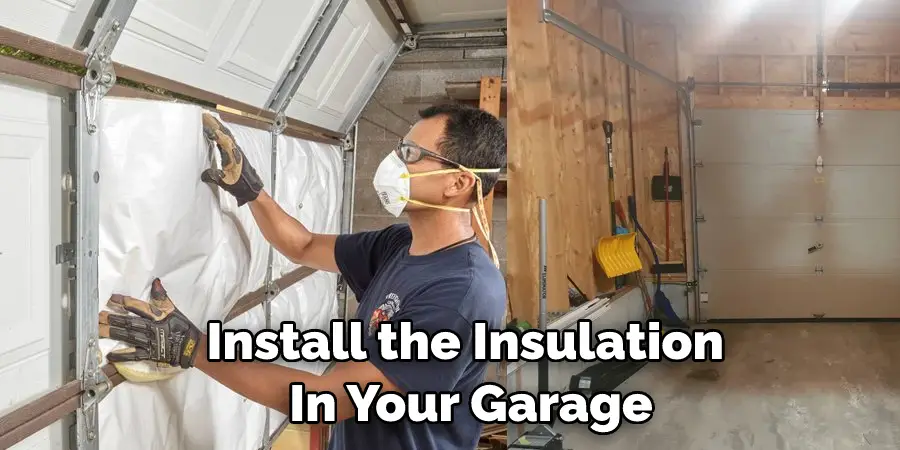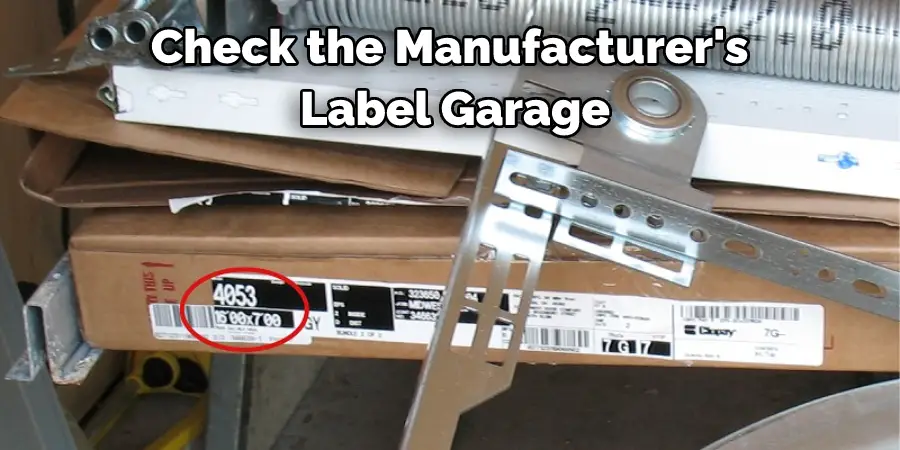Bonus rooms over garages are a great way to add extra living space to your home without breaking the bank. However, if they’re not properly insulated, you could be losing valuable heat in the winter and air conditioning in the summer. Here’s how to insulate a bonus room over garage.

Summary: To insulate a bonus room over a garage, you can either install insulation between the joists or attach rigid foam insulation directly to the walls and ceiling. Start by measuring the area to determine the amount of insulation material you’ll need. Then, follow safety precautions and safety gear when handling insulation materials. Make sure to insulate all nooks and crannies to prevent heat loss or gain.
What Is a Bonus Room Over a Garage?
A bonus room is an additional living space typically located above a garage. Bonus rooms are often used as guest bedrooms, home offices, or playrooms for children. While they can be a great asset to any home, there are a few things to consider before adding a bonus room to your house.
First, it is important to consider the impact on your home’s resale value. Second, you will need to factor in the cost of materials and labor. And finally, you will need to make sure that the space meets all local building codes and ordinances. But if you’re willing to take on the challenge, a bonus room can be a great way to add value to your home.
Why It’s Important to Insulate a Bonus Room Over Garage?
When most people insulate their homes, they focus on the living areas – the rooms where they spend most of their time. However, it’s also important to insulate less-used spaces, such as bonus rooms over garages. These rooms can be tricky to heat and cool, and they are often full of exposed pipes and ductwork. As a result, they can be drafty and uncomfortable.
By adding insulation, you can keep the space more comfortable while also reducing your energy bills. In addition, insulation can help to reduce noise from the garage, making it more enjoyable to use the bonus room. Whether you use the space for entertaining or as an extra bedroom, insulating the room can make a big difference in its comfort level.
How to Insulate a Bonus Room Over Garage Step by Step Guide
Step 1: Determine the R-Value of Your Garage
The first step to insulating your bonus room is to determine the R-value of your garage. The R-value is a measure of how well a material resists heat flow. The higher the R-value, the better the insulation.
There Are Several Ways to Determine the R-value of Your Garage:
Check the Manufacturer’s Label:
If your garage was built within the last few years, the R-value should be listed on the manufacturer’s label.

Measure the Thickness of The Insulation:
If you cannot find the R-value on the manufacturer’s label, you can measure the thickness of the insulation and look up the R-value in a table.
Consult an Energy Auditing Professional:
If you are not comfortable measuring the R-value of your garage insulation, you can consult an energy auditing professional.
Step 2: Choose the Right Insulation for Your Garage
Once you know the R-value of your garage, you can choose the right insulation for the job. There are many different types of insulation available on the market, so it is important to select the one that is best suited for your needs.
The most common types of insulation are fiberglass, cellulose, and foam.
Fiberglass:
Fiberglass is the most popular type of insulation. It is made from glass fibers and is available in batts or rolls. Fiberglass is easy to install and provides good thermal protection.
Cellulose:
Cellulose is made from recycled paper products and is treated with fire retardants. It is available in loose-fill or batts. Cellulose is more difficult to install than fiberglass, providing better thermal protection.
Foam:
Foam insulation is made from polyurethane or other chemicals. It is available in different R-values to choose the right one for your needs. Foam is also a good choice for hard-to-reach areas, such as around pipes or electrical outlets.

Step 3: Install the Insulation in Your Garage
Once you have selected the insulation you want to use, it is time to install it in your garage. If you are doing this yourself, follow the manufacturer’s instructions carefully. If you are hiring a professional, make sure they understand how you want the insulation installed and that they have experience with this type of project.
If you are insulating an attached garage, seal any cracks or gaps in the walls that lead into your home. This will prevent cold air from coming into your home and help keep your energy bills low.
Step 4: Enjoy Your Comfortable, Energy-Efficient Garage
Once your garage is properly insulated, you’ll enjoy a more comfortable space that is also more energy-efficient. This will help you save money on your energy bills and make your garage a more pleasant place to spend time. You may even find that you use your garage more often now that it’s more comfortable!
Step 5: If You Can’t Call a Professional:
If you decide to insulate your garage yourself, take the proper safety precautions. Wear gloves, a dust mask, and eye protection when working with insulation. Also, read the manufacturer’s instructions carefully before beginning the project.
If you are not comfortable working with insulation, you can always call a professional to help you with the project. A professional will be able to insulate your garage quickly and efficiently, and they will also be able to answer any questions you may have about the process.
Now that you know how to insulate a bonus room over garage, you can take the necessary steps to make your space more comfortable and energy-efficient. Please select the right insulation for your needs and install it correctly to get the best results. You may find that you use your garage more often now that it is more comfortable!
How Do You Insulate the Top of A Garage?
There are a couple of different ways to insulate the top of your garage. The first and most common method is to use fiberglass insulation. This type of insulation comes in large sheets that can be cut to fit the dimensions of your garage ceiling. Once the fiberglass insulation is in place, you’ll need to seal it with a layer of drywall.

Another option for insulating the top of your garage is to use spray foam insulation. This type of insulation can be applied directly to the ceiling, and it expands to fill any gaps or cracks. It’s important to note that spray foam insulation is flammable, so follow all safety instructions when using it.
Regardless of which type of insulation you choose, insulating the top of your garage will help to keep your space warm in the winter and cool in the summer. Keep reading for more information about how to insulate a bonus room over garage.
How Do You Insulate a Finished Garage Ceiling?
In order to keep your garage insulated and comfortable, you need to take care of the ceiling. The first step is to identify any cracks or gaps. These can be filled with expanding spray foam or caulk. Once the gaps are sealed, you can add insulation to the ceiling. If you have an unfinished garage, this is simply a matter of installing fiberglass batts between the joists.
For a finished garage, however, you will need to access the space between the drywall and the joists. This can be done by drilling holes in the drywall and injecting insulation into the space. This will help keep your garage warm in the winter and cool in the summer.
How Much Insulation Do I Need Above Garage?
If you’re like most people, your garage is one of the most neglected areas in your home. Dusty old holiday decorations? Check. Half-empty cans of paint? Check. Abandoned projects? Check. But when it comes to neglect, few things compare to an inadequately insulated garage.
Not only does this make your space less comfortable, but it can also lead to higher energy bills and a shorter lifespan for your garage door opener. So how much insulation do you need above your garage? The answer depends on a few factors, including the climate, the type of garage door, and the intended use of the space.
In general, however, most experts recommend at least R-19 insulation for an attached garage and R-13 for a detached garage. Also, seal any gaps or cracks around your garage door to prevent heat from escaping. By taking these simple steps, you can help keep your garage comfortable and reduce your energy costs.
Frequently Asked Question
Should You Insulate Above Your Garage?
There is no definitive answer to this question. However, you may want to consider the climate in your area, how often you use the bonus room, and how much insulation you currently have in your attic.
Is It Worth Insulating Garage Ceiling?
Yes, it is worth insulating a garage ceiling to keep the bonus room above the garage warmer. By doing so, you will also save energy and money on your heating bill.

How Much Does It Cost to Insulate a Garage Ceiling?
It depends on the size of the garage and the type of insulation you choose. For a standard-sized garage, insulation costs can range from $200 to $1,000.
Conclusion
If you are looking for a way to add some extra living space to your home, consider insulating a bonus room over the garage. Not only will this keep your family warm and comfortable in the winter, but it can also be a great place to relax and unwind after a long day.
Thanks for reading our post about how to insulate a bonus room over garage. By following these simple steps, you can have your new bonus room up and running in no time!
